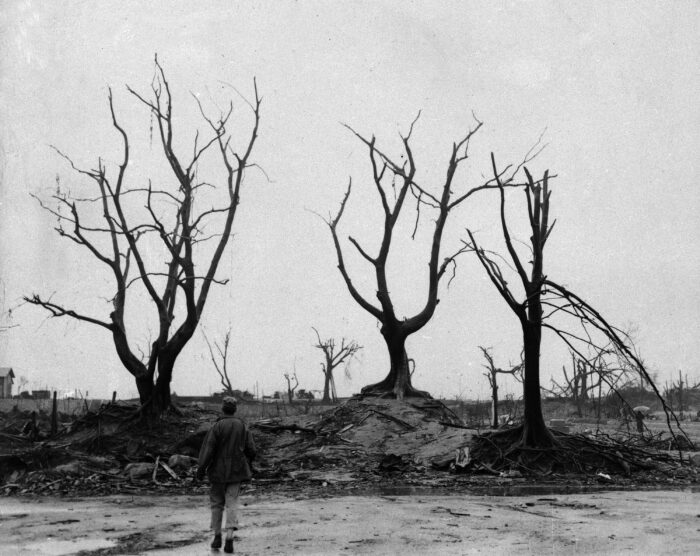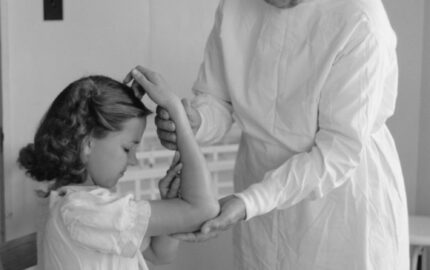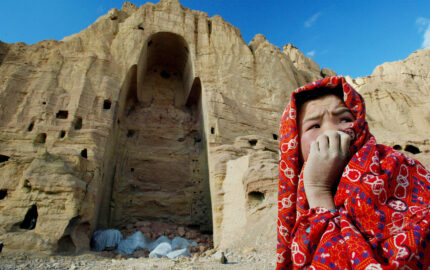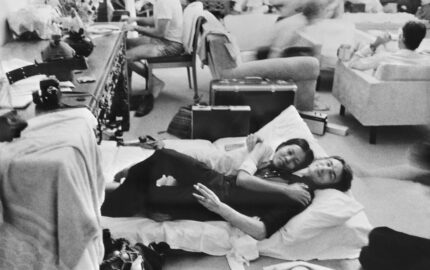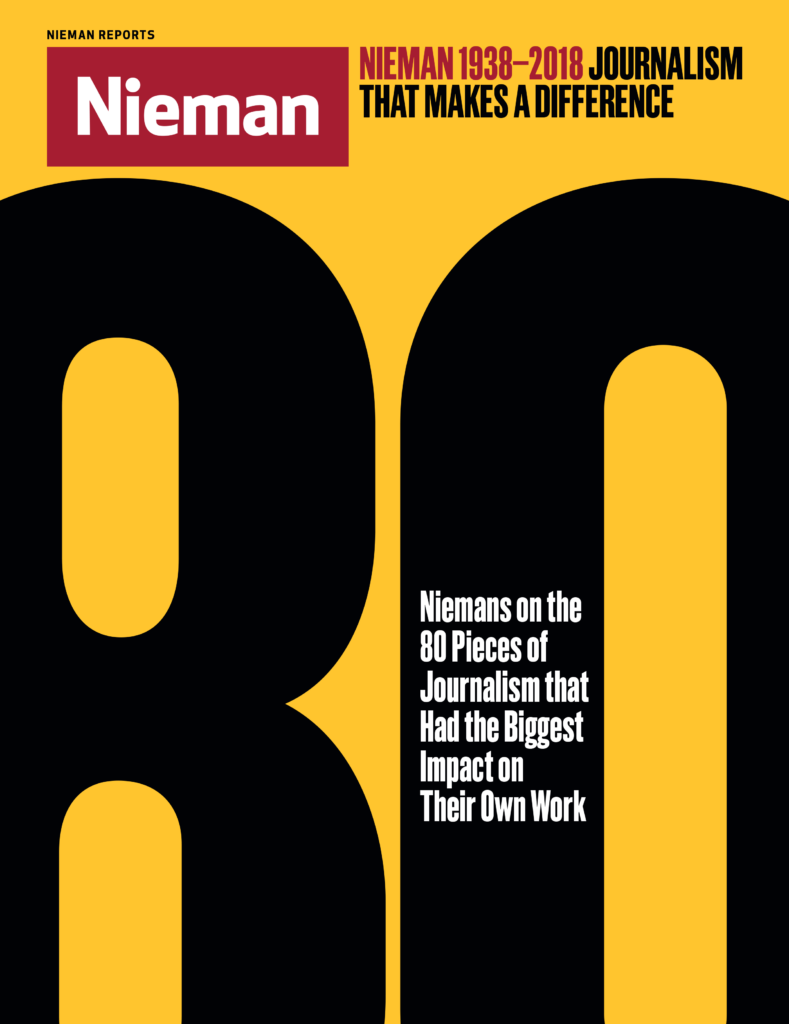
How are great journalists made? Often, it’s pieces of great journalism that help form them, influencing their lives or careers in an indelible way. To celebrate the Nieman Foundation for Journalism’s 80th anniversary in 2018, we asked Nieman Fellows to share works of journalism that in some way left a significant mark on them, their work or their beat, their country, or their culture. The result is what Nieman curator Ann Marie Lipinski calls “an accidental curriculum that has shaped generations of journalists.”
The 31,000-word article filled the entire Aug. 31, 1946 issue of The New Yorker magazine—the first anniversary of the detonation of the first atomic bomb at the close of World War II. Although there was no advance publicity of the article, the issue quickly sold out on New York’s newsstands as word of mouth spread. Subsequently the article was published as a book which is still in print today.
Hersey, who was 32 at the time, told the story of the nuclear holocaust through the eyes of six survivors whom he interviewed exhaustively. For this, Tom Wolfe considered Hersey to be one of the forerunners of the New Journalism of the ’60s and ’70s. Hersey considered his work plain old journalism.
“Hiroshima”’s impact is incalculable. Many scholars consider Hersey’s beautifully told story to be a major factor in bringing a war-weary humanity to its senses and possibly preventing a repetition of the horror that Hiroshima—and, shortly thereafter, Nagasaki—endured in August of 1945.
Hiroshima
By John Hersey
The New Yorker, Aug. 31, 1946
Excerpt
At exactly fifteen minutes past eight in the morning, on August 6, 1945, Japanese time, at the moment when the atomic bomb flashed above Hiroshima, Miss Toshiko Sasaki, a clerk in the personnel department of the East Asia Tin Works, had just sat down at her place in the plant office and was turning her head to speak to the girl at the next desk. At that same moment, Dr. Masakazu Fujii was settling down cross-legged to read the Osaka Asahi on the porch of his private hospital, overhanging one of the seven deltaic rivers which divide Hiroshima; Mrs. Hatsuyo Nakamura, a tailor’s widow, stood by the window of her kitchen, watching a neighbor tearing down his house because it lay in the path of an air-raid-defense fire lane; Father Wilhelm Kleinsorge, a German priest of the Society of Jesus, reclined in his underwear on a cot on the top floor of his order’s three-story mission house, reading a Jesuit magazine, Stimmen der Zeit; Dr. Terufumi Sasaki, a young member of the surgical staff of the city’s large, modern Red Cross Hospital, walked along one of the hospital corridors with a blood specimen for a Wassermann test in his hand; and the Reverend Mr. Kiyoshi Tanimoto, pastor of the Hiroshima Methodist Church, paused at the door of a rich man’s house in Koi, the city’s western suburb, and prepared to unload a handcart full of things he had evacuated from town in fear of the massive B-29 raid which everyone expected Hiroshima to suffer. A hundred thousand people were killed by the atomic bomb, and these six were among the survivors. They still wonder why they lived when so many others died.
Excerpt from “A Noiseless Flash” from HIROSHIMA by John Hersey, copyright © 1946, 1985, copyright renewed 1973 by John Hersey. Used by permission of Alfred A. Knopf, an imprint of the Knopf Doubleday Publishing Group, a division of Penguin Random House LLC. All rights reserved. Any third party use of this material, outside of this publication, is prohibited. Interested parties must apply directly to Penguin Random House for permission.
